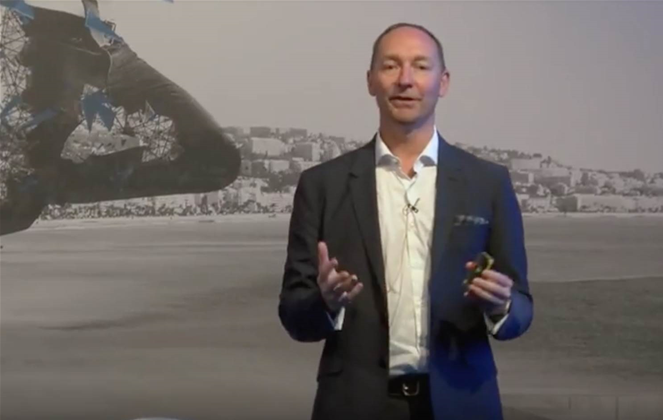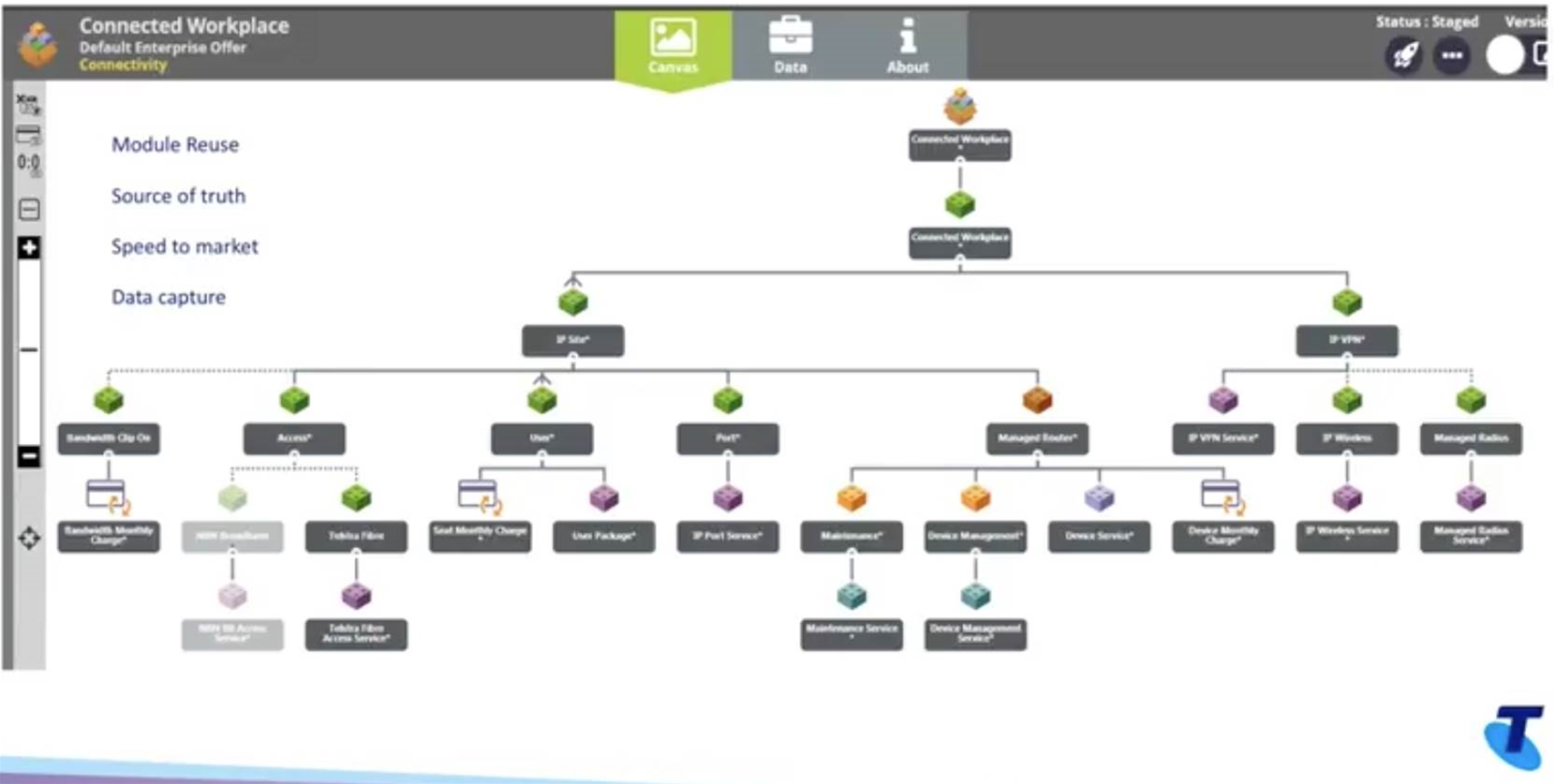Telstra’s move to overhaul the way it puts together and sells enterprise services is already driving fundamental changes in internal team structure as well as in the way it serves customers.

The telco appears to have revealed significant detail about the project in France in mid-May, a month before the project was publicly revealed.
What is known about the project so far is that Telstra has stood up a completely new IT stack on which enterprise services are based, and will allow business customers to self-service as much as possible.
Later this year, the telco will introduce ‘connected workplace’, a new cloud-provisioned suite of fixed and mobile, IT and unified communications services targeted first at the mid-market.
It has now emerged that much of this was already in train when it was publicly announced by Telstra in June.
Head of product digitisation delivery Ernest Margitta told a telecommunications gathering in Nice that the project sprung out of a need to service “digital native” users and businesses.
“The needs and expectations of those using our products and services has radically altered,” Margitta said.
Margitta was pulled across from running the telco’s $3 billion enterprise mobile product portfolio to lead the digitisation program of work.
It’s actually one of two large-scale digitisation programs presently underway at Telstra. “We love digitisation at Telstra,” Margitta said.
Designing “digital native” products for the B2B space first required an overhaul of the underlying IT systems upon which those products rely.
“If the tools and processes that our staff use are not simple or informed, all of the great work that we try to do to service our customers falls down,” Margitta said.
“So we’re really focused on improving the quality of life for our teams.
“We’re simplifying our business. Where we’ve got multiple ways of doing things, we’re really breaking that down and making sure we’ve got one way of designing, building and deploying products.”
The new B2B product stack was shared in June: consisting of vendor solutions by Sigma, Oracle Eloqua, Salesforce, CloudSense, Conga, Amdocs, ServiceNow and Aria.
This covers all stages a new product or service would go through to be developed and marketed: from concept to market, prospect to order, order to activate, request to resolve, and usage to cash.
“Concept to market is where we’re creating, designing and strategizing about what products to offer,” Margitta said.
“That moves into the purchase to order process, through [to] order to activate … and then the request to resolve for any of the customer enquiries - how is my service, is it working as expected?
“Then finally and very importantly we want to collect some money at the end of the day, so use to cash is the final stream.”
Product ownership redefined
Within each of those “value streams”, Telstra’s internal teams are being handed responsibility for creating and maintaining reusable modules that will form part of all future B2B-targeted products.
The structure - and its impact on the organisation - appears to be similar to microservices architectures being pursued by other large organisations, although Margitta did not couch it in these terms.
“In our first offer, ‘connected workplace’, some of the key things we’re driving in the product stream is all about reuse - creating a fundamental source of truth across the organisation for what are those modular building blocks [that make up the new product offering],” he said.
Margitta noted this is leading to changes in how Telstra treats product ownership.
“We’ve begun this concept of changing the role of the product manager as well, and moving away from being either a network-facing product engineer or a commercial-facing marketeer, to really become what we call product modular owners,” he said.
“The product modules actually show up in [a] catalogue. You own a module called Access or Telstra fibre or NBN or any one of these components, you product manage that thing and you lifecycle that thing.
“So rather than [owning] the actual offer in the market, down at the component level we’re changing the way our teams think about what they need to think about.
“These modules encapsulate all the information that’s needed about that product, from the commercial layer to the product domain layer right down into the service layer.
“So it’s a bit of a mindset change for us and there’s change management around the organisation around how we’ll design and build our products, but that’s happening at the same time as we bring more and more products through this process.”
This modular approach to architecting products will also changing the way Telstra updates its in-market propositions.
“We’re really focused [on] the responsiveness that we’ll be able to do over this once we’re able to iterate over that architecture,” Margitta said.
“We’re changing our mentality around how we deliver these things. We’ve moved from quarterly delivery cycles to really agile - every three weeks we can drop new Salesforce updates in, and every day we can drop new product updates in.
“That’s a mindset change for us in terms of our ability to change and influence the in-market propositions.”
“Easier to engage”
Telstra is increasingly under pressure from multiple fronts to change.
It is pursuing large-scale reorganisation as it looks to life without a lucrative wholesale access network, and the need to fill the hole that will leave in its forward revenues.
Margitta indicated that making things simpler and more modular in the backend would allow Telstra to do the same with its front-facing work: both in the products it brings to market, and the way it serves customers.
“We want to make Telstra the easiest company to work with,” he said.
“For our B2B customers they have choices in every one of their technology and communication needs.
“We want to make it really easy to engage with us, right from the moment you’re enquiring about your products through to the moment you’re buying or through to the moment you’re enquiring about how things are working in your network.
“To underpin that, we need to think about a whole range of different things around how customers can consume and configure our products, how our employees engage with them, we need to think about automation so there’s less manual tasks and ‘swivel chair’ processes where they still exist, and we need to think about the IT transformation that underpins that as well.”
Margitta showed off two examples of front-facing service delivery enabled by the simplification of the backend architecture.
The first is about allowing enterprise customers to more simply track the status of orders.
“Traditionally at Telstra you order [something] and then it may or may not show up at some point later on,” he said.
“In the digital age, we’re really focused on informing our customers about where their orders are in our systems. So we’ve created five stages - confirmed, delivered, finalised, ready for use, and billing - so they understand where their order is and they can track their own orders through our systems.
“They can also start to make decisions about that, so if you’re fixed broadband order is delayed, would you like a mobile broadband router to drive your business in the interim?
“To provide that kind of digital experience requires the kind of re-engineering I’ve talked about. We have to deliver a wealth of information right up into the customer layer and customer portals to make sure customers can see that kind of data as they come in.”
A second example shown was a ‘predictive management’ screen on the customer dashboard, which displays data on a “Google Maps-type” interface.
Margitta said this was a “deliberate” effort by Telstra to help customers “engage with us in a way they’re familiar with rather than the way we think about our network.”
“It’s very deliberate and tested very well with our customer-focused research,” he said.
Enterprise customers can customise the names of their endpoints or links rather than having to accept Telstra-coded names like ‘N1’ or ‘N2’.
“They can also see in real time what we see in the background, on their terms,” Margitta said.
“So if one of our network element [goes dark], the ability for customers to come in and understand how they are impacted, how and when will it be resolved, without us having to call every one of them, is a massive mindset shift for us.
“And it is helping to drive much higher customer satisfaction.”




_(20).jpg&h=140&w=231&c=1&s=0)

.png&h=140&w=231&c=1&s=0)
_(22).jpg&h=140&w=231&c=1&s=0)



_(26).jpg&w=100&c=1&s=0)

 iTnews Executive Retreat - Security Leaders Edition
iTnews Executive Retreat - Security Leaders Edition












_(1).jpg&h=140&w=231&c=1&s=0)



